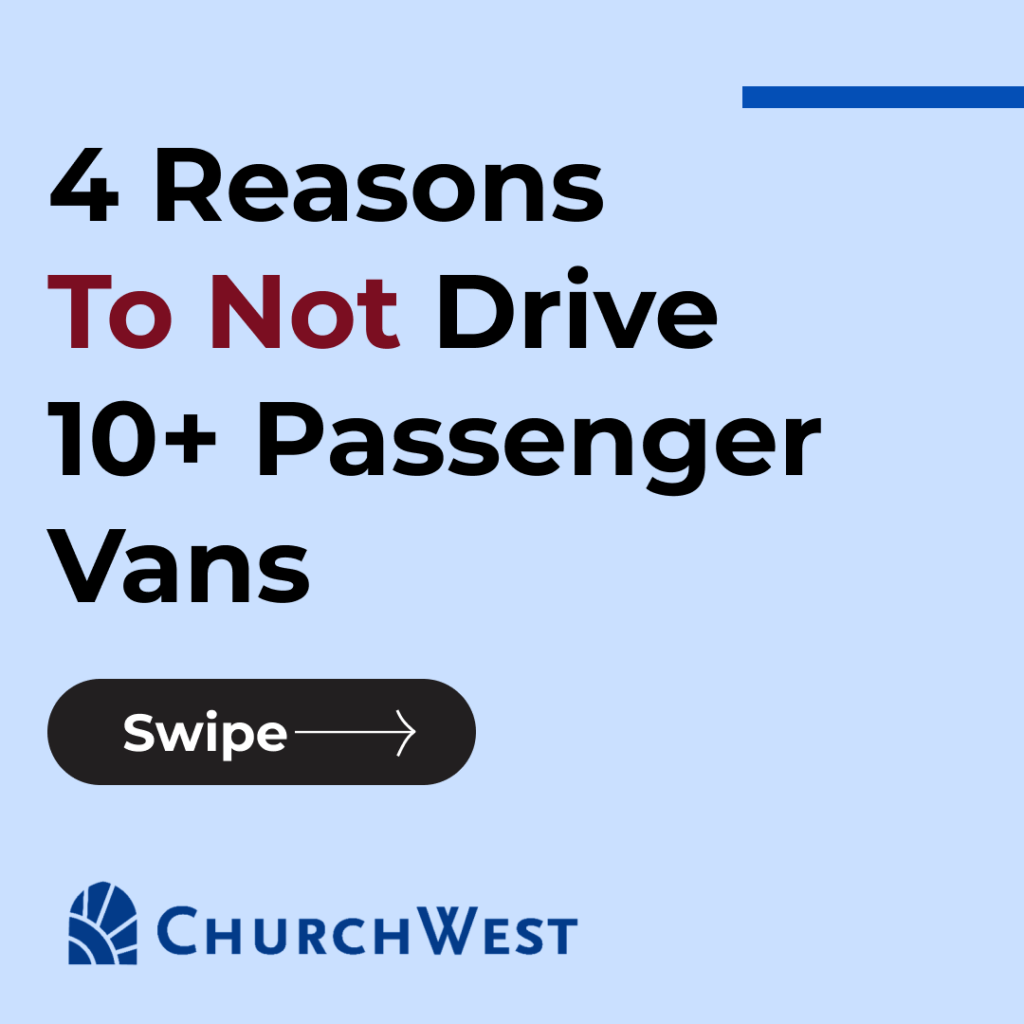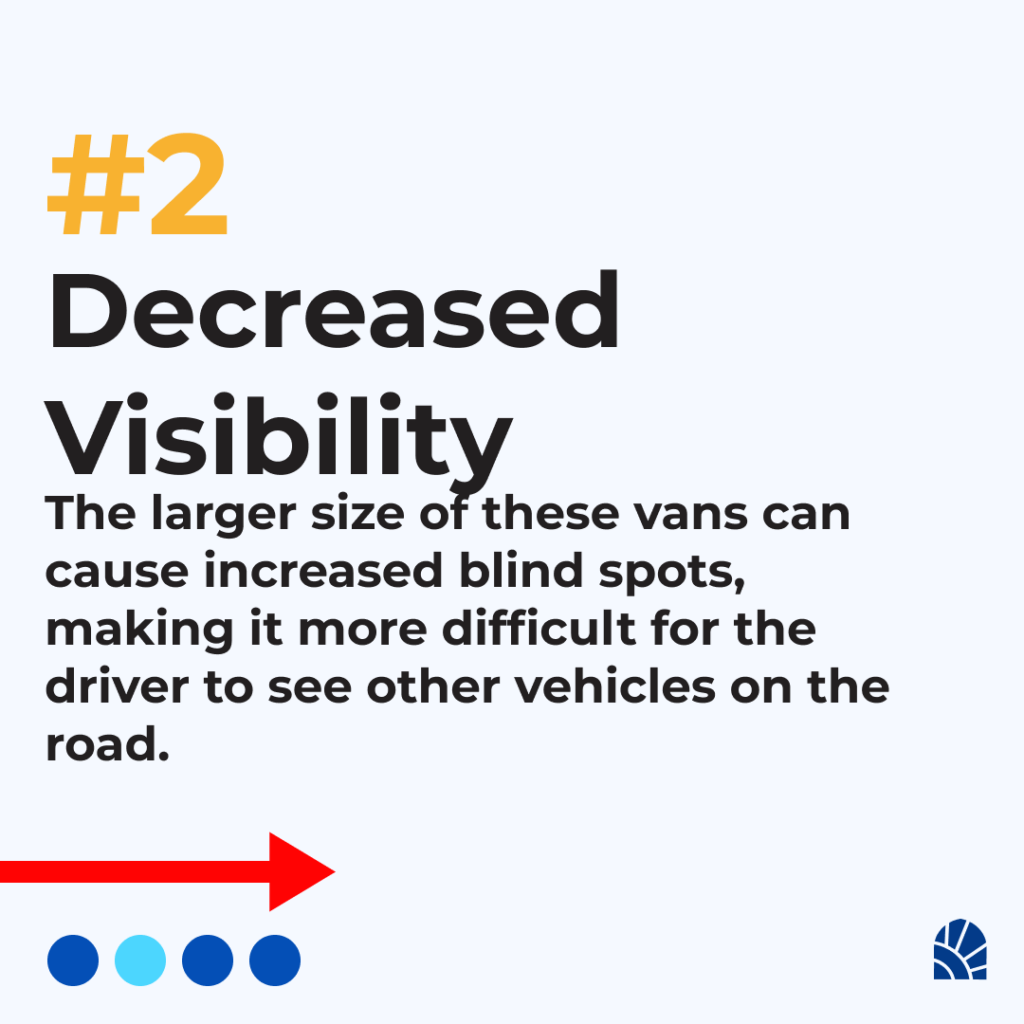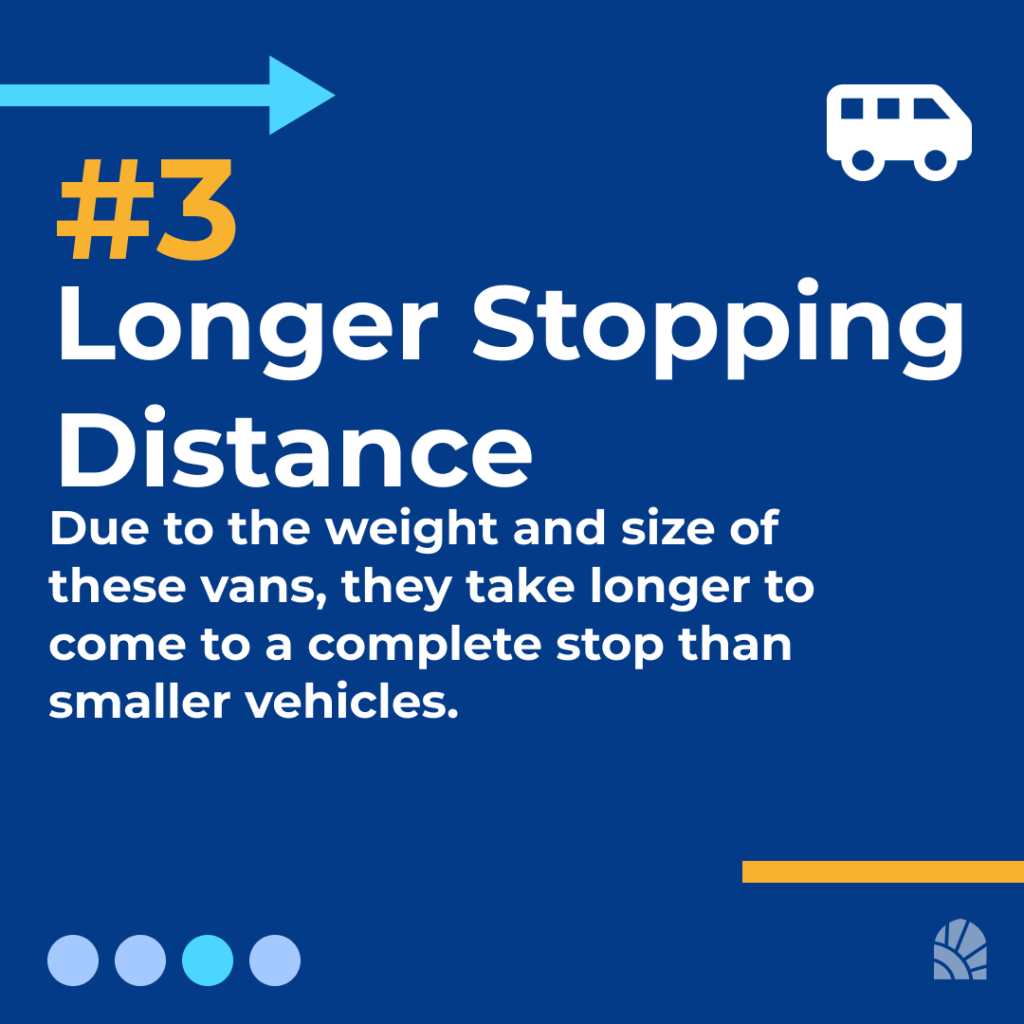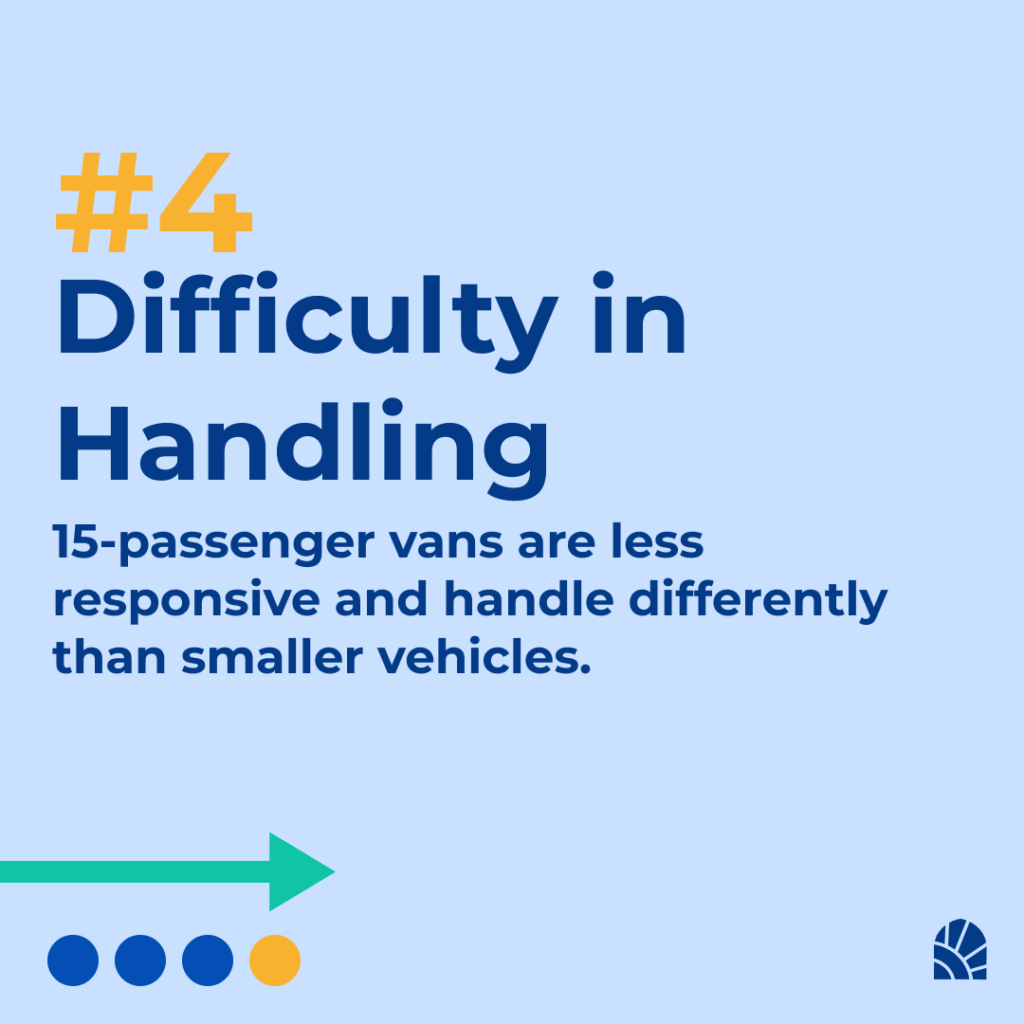As a ministry leader, keeping your congregation and staff safe should be a top priority, and that includes transportation. 10+ passenger vans (also known as 15 passenger vans) are a popular choice for many churches and schools, but they come with serious risks that can lead to costly auto claims and devastating accidents.
Additional Resources
It’s our recommendation to NEVER drive a 10+ passenger vehicle for your ministry. These vans are incredible dangerous, and they have contributed to some of the most tragic auto claims our agency has encountered.
If your ministry uses or is thinking about buying a 10+ passenger van, it’s important to consider the following risks.
Why are 10+ Passenger Vans So Dangerous?
These vans were originally designed for cargo, not passengers, and can become unstable when loaded with people, leading to an increased risk of rollover accidents. According to Ford, the largest manufacturer of this type of van, the risk of rollover increases by 200% with just 5 passengers and by 300% with 10 or more passengers.
There are several factors that contribute to the risk of a crash when driving a 15-passenger van. These include:
- Higher center of gravity: These vans sit higher off the ground than traditional vehicles, which makes them more likely to be involved in a rollover crash.
- Decreased visibility: The larger size of these vans can cause increased blind spots, making it more difficult for the driver to see other vehicles on the road.
- Longer stopping distance: Due to the weight and size of these vans, they take longer to come to a complete stop than smaller vehicles.
- Difficulty in handling: 15-passenger vans are less responsive and handle differently than smaller vehicles.





Considerations when Driving 10+ Passenger Vans
We really can’t say this point enough. DON’T drive these vans. But if you already own one of these vans, please keep these considerations in mind:
California Licensing Requirements
Any California driver who drives a vehicle designed to transport 10 or more persons (including the driver) MUST acquire a Commercial Driver’s License (CDL) with a Passenger endorsement. This is a non-negotiable for anyone operating this vehicle on behalf of your ministry.
Pay special attention to tire pressure
The NHTSA attributes 11% of fatal rollover accidents involving these vehicles to tire pressure. To prevent such incidents, it’s crucial to inspect and maintain the tires, brakes, and other vital components regularly. This includes checking tire pressure and tread depth, as well as ensuring that tires are in good condition. The NHTSA has established a new safety standard, Federal Motor Vehicle Safety Standard No. 138, which requires tire pressure monitoring systems (TPMS) for light vehicles, including 15-passenger vans and buses. The TPMS will detect if a tire is underinflated by more than 25% and warn the driver, making it a significant safety advancement for these vehicles. Regular maintenance also includes regular oil changes, checking fluid levels, and ensuring all lights and signals are functioning properly.
Always wear a seatbelt
Wearing a seatbelt is one of the simplest and most effective ways to stay safe while riding in a 15-passenger van. Unfortunately, data from the National Highway Traffic Safety Administration (NHTSA) shows that 70% of 15-passenger van occupants killed in crashes were not wearing a seatbelt. This number is even more concerning when you consider that 41% of those killed in 15-passenger van crashes were ejected from the vehicle. To ensure your safety while riding in a 15-passenger van, it is important to always wear a seatbelt, adjust it to fit properly, and make sure it is fastened before the van starts moving. By doing so, you are taking an important step towards reducing your risk of injury or death in the event of an accident.
Alternatives for Your Ministry
Hopefully by now we’ve convinced you that these vans are not appropriate for your ministry. That’s why we want to provide you several transportation alternatives to consider:
Renting or Leasing a Bus or Coach
Renting or leasing a bus or coach is a great option for larger groups. These vehicles have more safety features and are designed to handle large groups of passengers and heavy equipment.
Using Multiple Smaller Vehicles
If you’re traveling with a smaller group, consider using multiple smaller vehicles instead of a 15 passenger van. This reduces the risk of rollover accidents and makes it easier to handle and brake the vehicles.
Utilizing Ride-Sharing Services
Another option is to use ride-sharing services such as Uber or Lyft. This is a great option for smaller groups and for those who are uncomfortable driving a large vehicle.
Commercial Auto Insurance Implications for 15 Passenger Vans
Ministries that use 15 passenger vans should be aware of the potential impact on their commercial auto insurance policies. Insurance companies may charge higher premiums or exclude coverage for 15 passenger vans due to the increased risk of accidents. To ensure that your ministry is properly covered, speak with your insurance provider and review your policy to make sure that you have the right coverage in place.
Conclusion
Keeping your congregation and staff safe is crucial, and that includes transportation. By being mindful of the risks associated with 15 passenger vans and exploring alternative options, you can help reduce the risk of accidents and ensure that your ministry events are safe and successful.






